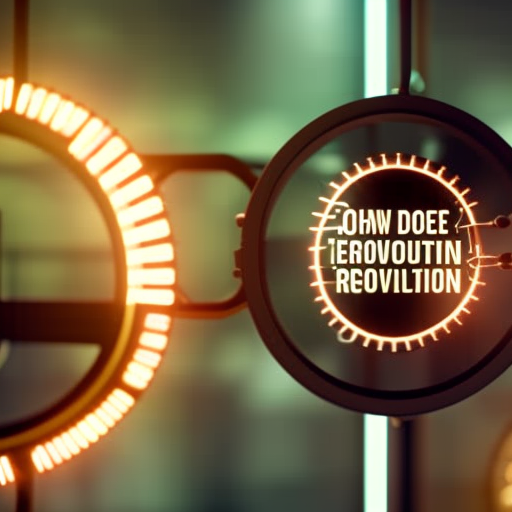
The Circular Economy and Scope 3 Emissions
Energy professionals must convey the importance of transitioning to a circular economy in the manufacturing sector by committing to action. The average consumer is becoming more aware of Scope 3 emissions, holding supply chains and production lines to higher standards.
More than 70% of a product’s carbon footprint rests within the Scope 3 indirect emissions category that a circular economy could eliminate.
According to the Greenhouse Gas Protocol, the Scope 3 qualifier encompasses upstream activities referencing production and everything required to manufacture the product. It may include material acquisition and waste generated from operations.
Downstream is another consideration describing post-consumer habits, usage, distribution and disposal. Circular practices promote waste as materials for repurposing.
Numerous categories of Scope 3 emissions come from manufacturing, procurement and logistics activities. The sector has one of the most potent opportunities to decrease the carbon footprint of industries worldwide using circular economic business models. They mitigate most greenhouse gases by incorporating renewable resources and energy, implementing closed-loop techniques and collaborating with ethical third parties.
- 73% stated that obtaining data was a challenge in calculating Scope 3 emissions.
- The most applied circular practices in manufacturing are substitution for lower-emissions materials, reducing hazardous waste and phasing out single-use materials.
- Only 24% of manufacturers plan to reduce emissions with science-based targets.
- The least-focused circular practices for manufacturing were designing products to be shared by multiple users and selling them as a service, such as rentals.
- The largest emissions categories were procurement, transport, production, products and waste generation.
How Manufacturers Become Circular
Many large businesses neglect to adopt sustainable structures for two main reasons. The first is because they are afraid it will harm bottom lines. It is an assumption that sustainable methods and technologies are more costly than environmentally destructive alternatives. Smart budgeting and taking advantage of government incentives and grants make it more affordable than most perceive.
The second motivation for ignoring embracing the circular economy is that it is not mandatory. Policies and environmental regulatory adjustments drive most systemic change in all business activities, including cleaning, investing and building. Some environmental regulation exists, but it does not mention the circular economy specifically.
Resource decoupling is one of the most influential ways to transform a business plan. It requires enterprises to dissociate profit and corporate growth from resource utilization. Decoupling makes companies see more value in their products, including the environmental impact, more than the profit margins.
Companies must also implement solutions, such as the strategies from the study. For example, incorporating infrastructure that allows customers to return glass cosmetics bottles for refilling is an example of circular methodology.
The Manufacturers Leading the Charge
Several key players have realized more than recycling programs are needed to make a manufacturer sustainable for the long term. They prioritized sustainable and resilient infrastructure, longevity and upcycling materials, even if the maker does not use the product’s materials in the same form. The goal is to reduce carbon emissions throughout the entire manufacturing process.
Several companies even embrace a waste-to-materials framework, using everything they can to upcycle new products, use them as compost or employ them as a fuel for electricity. These real-life circular manufacturers hope to inspire others.
Patagonia is one of the forerunners in every sustainable company conversation. It embraces the circular economy with its Worn Wear program, connecting with customers to recycle and repair textiles. People see the fruits of labor with their clothing line made of recycled materials and supplemented with organic cotton.
DyeCoo also works in textiles but on the dye side. Creating safe, environmentally friendly ways to apply dyes is essential in nations where fast fashion workers use toxic dyes in unsafe conditions, like Bangladesh and Thailand. It found a way to minimize carbon-emitting materials by leveraging carbon dioxide. High pressurizing enables using dyes with no additives. Carbon dioxide evaporates and is ready for reuse.
Manufacturers can be circular outside of the fashion industry, too. HYLA Mobile mainly collaborates with other manufacturers and tech makers to repurpose its waste. It minimizes the e-waste epidemic by providing a constant, reliable growth stream.
The Impact of Circular Economies on Manufacturing
The planet’s health is enough of a benefit, but it manifests in numerous forms. Circular economies marry multiple related industries and corporate goals, such as waste management, raw material extraction, ethical labor and rewriting a product’s end-of-life cycle. These focus areas are generally disparate, but focusing on building a circular economy requires manufacturers and energy experts to weigh them equally.
- Eliminating resource scarcity
- Saving biodiversity by maintaining natural resources and habitats
- Focusing on cleaner, renewable materials
- Restructuring consumerist mindsets
- Reducing impacts of environmental racism and poverty
Circular marketing also encourages digital transformation. Adapting to these practices usually requires new infrastructure and software. Many manufacturers are already behind in adopting AI or the Internet of Things. There is no better time than now, especially for analyzing data critical for determining circular economic plans.
The Circular Economy in Practice
Professional energy industry workers and environmental experts must work with manufacturers to instill a circular economy. It is time to reimagine operations and restructure them to take back what a company puts into the world. They should empower consumers to work with them to responsibly give products a new life at the end so it is fully cradle-to-cradle. Companies can use the resources to make new products, power electrical systems and renourish the planet.
SDGs, Targets, and Indicators
SDGs Addressed or Connected to the Issues Highlighted in the Article:
- SDG 7: Affordable and Clean Energy
- SDG 9: Industry, Innovation, and Infrastructure
- SDG 12: Responsible Consumption and Production
- SDG 13: Climate Action
- SDG 15: Life on Land
Specific Targets Based on the Article’s Content:
- Target 7.2: Increase substantially the share of renewable energy in the global energy mix.
- Target 9.4: Upgrade infrastructure and retrofit industries to make them sustainable, with increased resource-use efficiency and greater adoption of clean and environmentally sound technologies and industrial processes.
- Target 12.2: By 2030, achieve the sustainable management and efficient use of natural resources.
- Target 13.3: Improve education, awareness-raising, and human and institutional capacity on climate change mitigation, adaptation, impact reduction, and early warning.
- Target 15.2: Promote the implementation of sustainable management of all types of forests, halt deforestation, restore degraded forests, and increase afforestation and reforestation.
Indicators Mentioned or Implied in the Article:
- Percentage of renewable energy in the global energy mix (Indicator for Target 7.2).
- Resource-use efficiency in industries (Indicator for Target 9.4).
- Material acquisition and waste generated from operations (Indicator for Target 12.2).
- Education and awareness on climate change mitigation and adaptation (Indicator for Target 13.3).
- Extent of sustainable management of forests (Indicator for Target 15.2).
Table: SDGs, Targets, and Indicators
| SDGs | Targets | Indicators |
|---|---|---|
| SDG 7: Affordable and Clean Energy | Target 7.2: Increase substantially the share of renewable energy in the global energy mix. | Percentage of renewable energy in the global energy mix. |
| SDG 9: Industry, Innovation, and Infrastructure | Target 9.4: Upgrade infrastructure and retrofit industries to make them sustainable, with increased resource-use efficiency and greater adoption of clean and environmentally sound technologies and industrial processes. | Resource-use efficiency in industries. |
| SDG 12: Responsible Consumption and Production | Target 12.2: By 2030, achieve the sustainable management and efficient use of natural resources. | Material acquisition and waste generated from operations. |
| SDG 13: Climate Action | Target 13.3: Improve education, awareness-raising, and human and institutional capacity on climate change mitigation, adaptation, impact reduction, and early warning. | Education and awareness on climate change mitigation and adaptation. |
| SDG 15: Life on Land | Target 15.2: Promote the implementation of sustainable management of all types of forests, halt deforestation, restore degraded forests, and increase afforestation and reforestation. | Extent of sustainable management of forests. |
Behold! This splendid article springs forth from the wellspring of knowledge, shaped by a wondrous proprietary AI technology that delved into a vast ocean of data, illuminating the path towards the Sustainable Development Goals. Remember that all rights are reserved by SDG Investors LLC, empowering us to champion progress together.
Source: energycentral.com

Join us, as fellow seekers of change, on a transformative journey at https://sdgtalks.ai/welcome, where you can become a member and actively contribute to shaping a brighter future.






